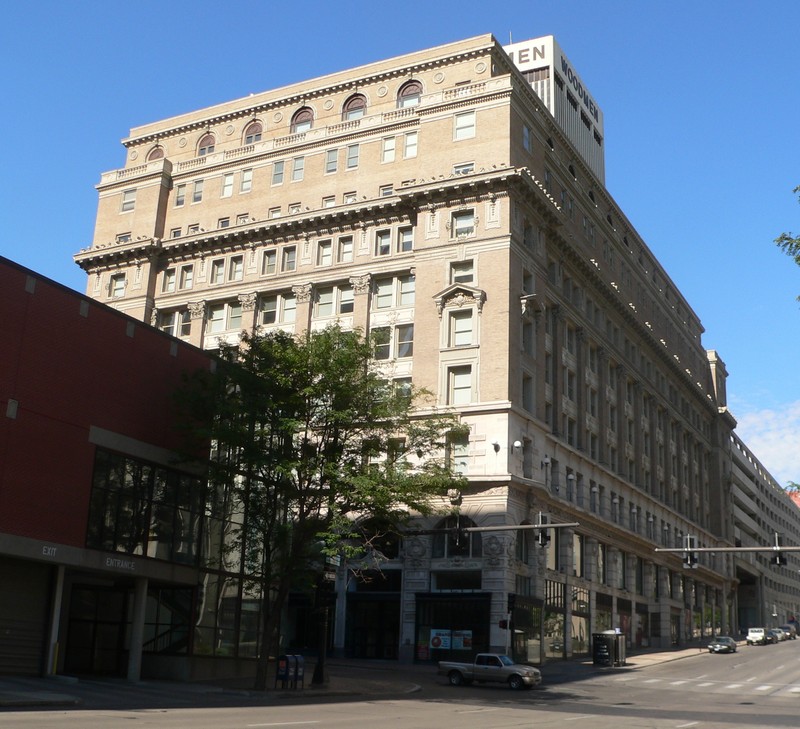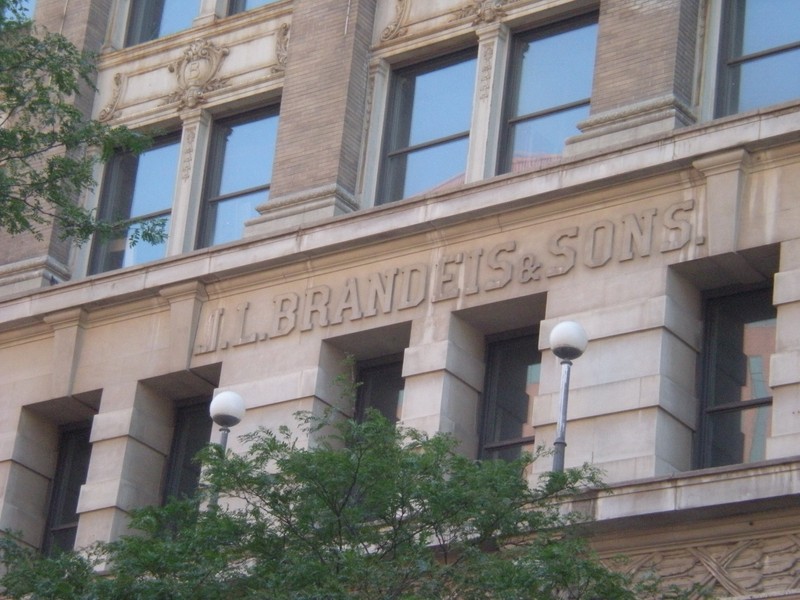.J.L. Brandeis and Sons Store Building
Introduction
Text-to-speech Audio
The J. L. Brandeis and Sons Store Building was completed in 1906 and served as the flagship department store for the of Brandeis retail chain, founded by Jonas L. Brandeis. Brandeis came to Omaha in 1881 and opened his first retail store in 1888. Though he died in 1903, the business he built grew substantially, eventually becoming one of the largest department store operations in the region. Built in 1906 as an eight story building (eventually ten in 1921), this department store was as grand as the flagship stores of Macy's, Marshall Field's, and other leading department stores.
Images
.J.L. Brandeis and Sons Store Building

The building still bears the Brandeis name

Backstory and Context
Text-to-speech Audio
Austrian-born Jonas L. Brandeis opened his first Omaha store in 1888 at 506 South 13th Street. Though he did not live to see the construction of this building, his success allowed his sons to arrange for the development of what would become the Brandeis flagship store.
This building served as the flagship and the center of operations for the family's chain of department stores, one of the largest chains of department stores west of Chicago. For nearly three-quarters of a century, this store was the focal point of Omaha's commercial activity.
By the turn of the century, Jonas's three sons, Arthur, Hugo, and Emil, assumed control of the the day-to-day operations, with Arthur (the eldest son) serving as the business' president. Arthur Brandeis ascended to the presidency when his father, Jonas, died in 1903 and the store and retail chain remained in the family until 1948.
The store itself occupied three of the eight floors (later ten stories) initially, but by the 1950s, the store filled the entire building. By the late 1950s, the business branched out into investments including construction of shopping malls. Brandeis also acquired Gold and Company in 1964, among many other investments. By the early 1970s, Brandeis managed fifteen department stores, had 3,000 employees and exceeded $100 million in sales.
In 1980, the flagship store closed, signaling the beginning of the end for an operation that began as nothing more than a small Omaha store in 1888. Brandeis sold its retail chain to Younkers in 1987. That company did not maintain the Brandeis name but instead turned them into Younkers stores. However, the era of large downtown department stores had come to an end by the 1980s and suburban malls and outlets became the center of the retail world for the next three decades.
Sources
Kidd, Daniel. "Nomination Form: Bradeis-Millard House." National Register of Historic Places. October 28, 1980. https://npgallery.nps.gov/GetAsset/38718466-430b-45f6-b877-4b1c520a4358
Larsen, Lawrence H. and Cottrell, Barbara J. The Gate City: A History of Omaha. Conclusion by Harl A. Dalstrom. Lincoln: University of Nebraska Press, 1997.
By Ammodramus - Own work, CC0, https://commons.wikimedia.org/w/index.php?curid=27397847
cd2400a4d07a
Photo Sources
By JonClee86 at English Wikipedia, CC BY-SA 3.0, https://commons.wikimedia.org/w/index.php?curid=9069519
